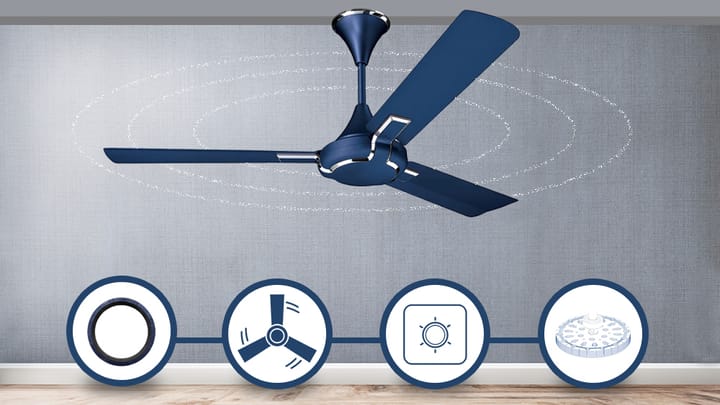Power Quality Monitoring: Market Landscape Assessment

Authors: Dhruv Jain, Suparna Havelia
What is Power Quality?
India is on the verge of becoming an energy surplus state with respect to per capita demand and peak demand. However, this reality is not bereft of certain electricity issues which require immediate attention. Some of the known and established power issues are:
· Frequent power cuts
· Under-investments on transmission and distribution infrastructure
· Low cost of electricity/ power theft
· Lack of up-skilled technicians, etc.
However, there is one another aspect of electricity issues which is often ignored by us – ELECTRIC POWER QUALITY. Electric power quality is the degree to which the voltage, frequency, and waveform of a power supply system conform to established specifications. Simply put, power quality is the compatibility between what comes out of an electric outlet and the load that is plugged into it.
A market research and analysis study conducted by the GreenTree Global team titled ‘Power Quality Monitoring: Market Landscape Assessment’ furnishes light on the major issues which reduce power quality, market sizing and forecasted market trends for 2018-2021. It makes a deep dive into the Power Quality Measuring devices market in India which is reflective of the overall awareness of this topic at the end consumer level (primarily industrial set ups). The study was conducted in the year 2018. Click here to read the entire assessment study.


Indian Power Quality Market Overview
Poor power quality is one of the root causes of a number of problems including productivity losses, customer dissatisfaction and much more. Power Quality issues in the Electrical networks are being driven by transmission effects, increased usage of non-linear loads and faults in the distribution system.
While there is limited availability of data on the kind of impact power quality issues have on the Indian market, a national-level estimate compiled by Power Grid Corporation of India Limited states that Rs 54 billion worth of energy remained unserved due to poor power quality.
Power Quality regulations across States in India
Power Quality Regulations vary across states: different states prescribe different limits for total harmonic distortion leading to lack of a unified implementation framework for penalties. Certain states such as Karnataka, Andhra Pradesh, Madhya Pradesh and Delhi lack basic clarity in monitoring voltage supply and a methodology for implementation of harmonics and voltage. These states also do not provide any compensation for failure to maintain voltage variation and harmonics within prescribed limits, resulting in reduced dependence on state-appointed DISCOMs and increased customer dissatisfaction. Consumers are also not apprised of their responsibility towards harmonics control.
Market Sizing and Industry Scenario
To understand awareness of the Power Quality in India as subject, we looked at evaluating the Power Quality market using a proxy indicator – PQAD. We looked at the market volume & its split across various categories to understand the rate of increase in adoption at industry wide level. The study focused on various industries which are affected by PQ issues thus PQ monitoring becomes the first step for them towards mitigating & improving PQ in the overall system. The industry verticals covered in the study are as follows:
- Auto
- Renewables
- Oil & Gas
- Metal
- Cement
- Hospitals
- Data centres
Findings:
PQAD market in India is expected to grow at a CAGR of 14% during the period 2018-21. Industry and utilities are likely to lead the growth. The COVID-19 period has led to increase in the need data centres, communication centres and servers, capable of handling heavy streaming and rapid download speeds. This has initiated the further need for installing measuring devices & relevant protection systems for such critical equipment usage. The study illustrates the dominant market factors, characteristics and emerging trends of PQAD adoption in India.

Current Trends & Opportunities
PQAD is largely used to analyze power quality of the system so to design appropriate controlling solution. Mobile type is preferred as continuous monitoring is not required.
If we scourge through the list user segment- wise, we will see the following trends & opportunities in PQAD.

Emerging areas for PQ devices
Let’s look at the example of electromobility. Electric vehicles are the established mode of clean transportation, which has minimal impact on the environment and is highly sustainable. With growing consumer awareness and adoption of electric vehicles in India, mobility is making a gradual shift to a low-carbon economy. However, the dependence of e-vehicles on the power sector causes a number of power quality problems that need to be mitigated. Hence, power quality analysers need to be employed on such a system to measure and analyse various power quality parameters during charging of e-vehicles.

International Players in India

Conclusion
In our market research , we have conducted an in-depth study to find out the current application of PQAD which perhaps depicts that these industries are the most vulnerable to PQ distortions. As newer energy components are added in the value chain, PQ as a topic will continue to gain significance because of its impact of the overall grid stability & energy security. Usage in large hospitals and data centres segments is expected to grow fast . Electrical Vehicle charging infrastructure is likely to drive increased demand of PQ Measuring instruments & mitigation devices in the next 3-4 years.
The subject awareness for PQ is still very low at an individual consumer level. Moreover, the country will need additional capacity building efforts to train professionals & consultants who can provide quality service to industries. There is also a demand from energy professionals for a appropriate certification for Power Quality in order to regulate the service quality of the professionals working in this industry. Agencies like BEE, NPC, CII can take lead in organizing such certification workshops Private sector firms should also be encouraged to step in and contribute to this cause. Prolonging the life of an electrical appliance or equipment is good not only for the environment, but also for the pocket.



